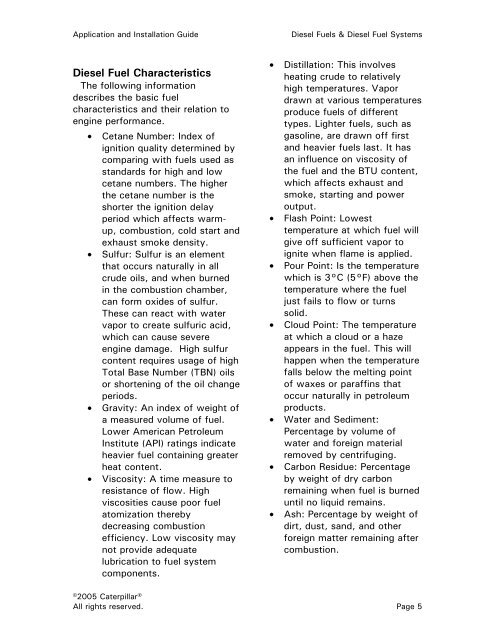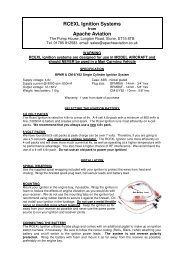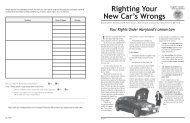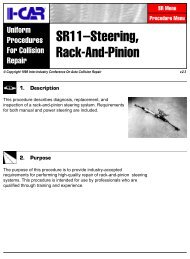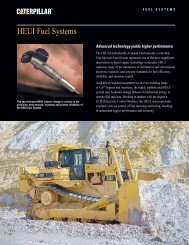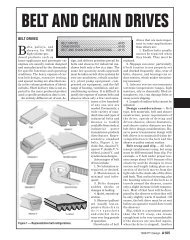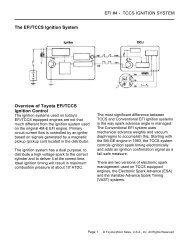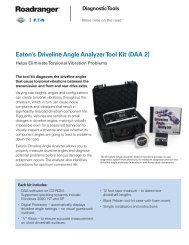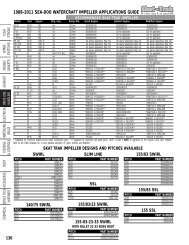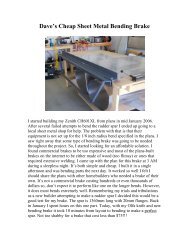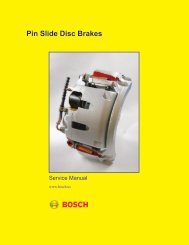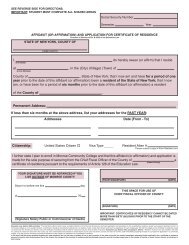DIESEL FUELS & DIESEL FUEL SYSTEMS
Diesel Fuel Systems - weindex.info
Diesel Fuel Systems - weindex.info
Create successful ePaper yourself
Turn your PDF publications into a flip-book with our unique Google optimized e-Paper software.
Application and Installation GuideDiesel Fuels & Diesel Fuel SystemsDiesel Fuel CharacteristicsThe following informationdescribes the basic fuelcharacteristics and their relation toengine performance.• Cetane Number: Index ofignition quality determined bycomparing with fuels used asstandards for high and lowcetane numbers. The higherthe cetane number is theshorter the ignition delayperiod which affects warmup,combustion, cold start andexhaust smoke density.• Sulfur: Sulfur is an elementthat occurs naturally in allcrude oils, and when burnedin the combustion chamber,can form oxides of sulfur.These can react with watervapor to create sulfuric acid,which can cause severeengine damage. High sulfurcontent requires usage of highTotal Base Number (TBN) oilsor shortening of the oil changeperiods.• Gravity: An index of weight ofa measured volume of fuel.Lower American PetroleumInstitute (API) ratings indicateheavier fuel containing greaterheat content.• Viscosity: A time measure toresistance of flow. Highviscosities cause poor fuelatomization therebydecreasing combustionefficiency. Low viscosity maynot provide adequatelubrication to fuel systemcomponents.• Distillation: This involvesheating crude to relativelyhigh temperatures. Vapordrawn at various temperaturesproduce fuels of differenttypes. Lighter fuels, such asgasoline, are drawn off firstand heavier fuels last. It hasan influence on viscosity ofthe fuel and the BTU content,which affects exhaust andsmoke, starting and poweroutput.• Flash Point: Lowesttemperature at which fuel willgive off sufficient vapor toignite when flame is applied.• Pour Point: Is the temperaturewhich is 3°C (5°F) above thetemperature where the fueljust fails to flow or turnssolid.• Cloud Point: The temperatureat which a cloud or a hazeappears in the fuel. This willhappen when the temperaturefalls below the melting pointof waxes or paraffins thatoccur naturally in petroleumproducts.• Water and Sediment:Percentage by volume ofwater and foreign materialremoved by centrifuging.• Carbon Residue: Percentageby weight of dry carbonremaining when fuel is burneduntil no liquid remains.• Ash: Percentage by weight ofdirt, dust, sand, and otherforeign matter remaining aftercombustion.©2005 Caterpillar®All rights reserved. Page 5


